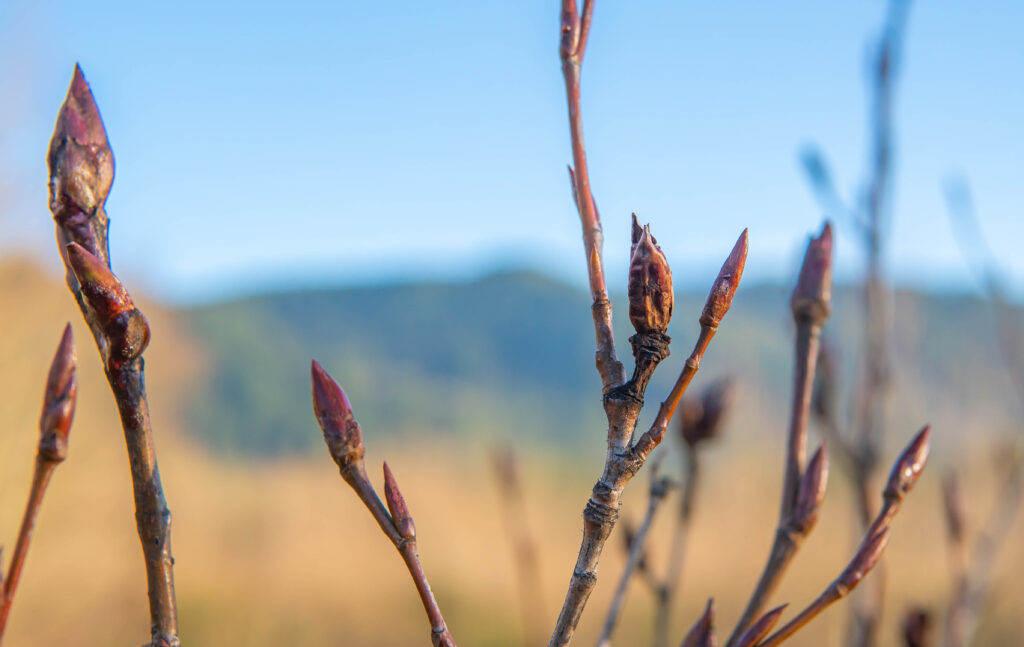
As I write this, the snow in the foothills of the Pacific Northwest has vanished, signs of life begin to sprout from the earth, the first blossoms of the year are forming on fruit trees, and the Poplar buds are ripe for harvest. This time of year, from late December to early March, many species of Cottonwood and Poplar are ready to harvest in the northern hemisphere as their resinous, aromatic buds are fully formed and rich with fragrant medicine.
Many species of Cottonwood and Poplar trees produce resinous buds that have long been used for topical, internal, and aromatic medicine by various Native American tribes. Species like Black Cottonwood, Populous trichocarpa, are known to have some of the best buds for therapeutic use. Black Cottonwood is found along rivers and lakes, and damp regions from Northern California up through Oregon, Washington, and into B.C. Canada, and east into Idaho and Western Montana. Balsam Poplar is another ideal tree for medicinal resin buds which grows in and around the Rocky Mountain region.
If you don’t have either of these species growing locally, not to worry, just work with what you’ve got. There are many species in the Populus genus around the northern hemisphere that produce aromatic buds with therapeutic value.
Poplar buds make an effective infused medicinal oil, can be incorporated into a healing salve, are used in incense, and can even be ingested as tea or oil. They smell very sweet and resinous and can even be incorporated into perfumery. Many know these buds by another name, Balm of Gilead, though this name is shared with a much older source of the Biblical resin from Commiphora species. You can read my article about these different Balms of Gilead here.
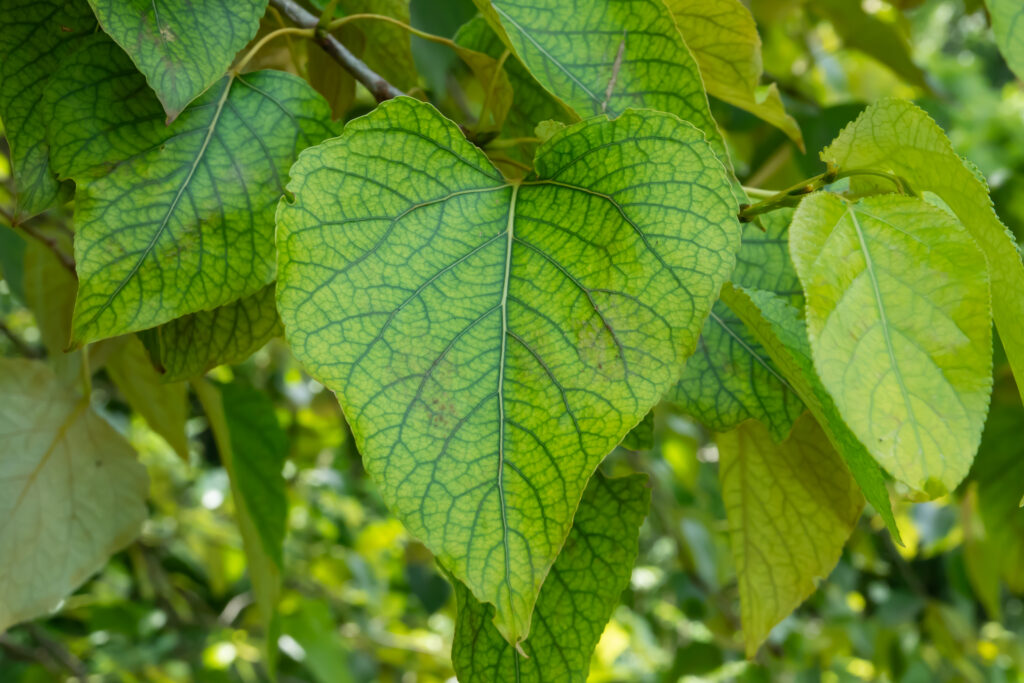
Black cottonwood (Populus trichocarpa) leaves in springtime.
Harvesting Poplar Buds
Poplars and Cottonwoods of the Populus genus are light brown or white-barked trees, often with black spotting or scars on their surface. They have waxy heart-shaped leaves and their ripe buds are very sweet smelling, like maple syrup crossed with caramelized sugar. Some but not all species produce cotton, which floats around in the air from April to July, depending on their region. When you think you’ve found one of these trees, break open a bud and you’ll see an orange-reddish coloration inside. If you’re unsure of your identification skills, always look up the plant you’re looking for in a reference book for safety.
Poplar trees are tall.. They can grow up to 200 feet. This can make it difficult and often impossible to reach high branches to harvest buds. However, some trees tend to grow a bit shorter around river banks as the volume and course of rivers slowly change over time which disturbs and damages trees, preventing them from growing very tall. Often you’ll find stands of 10 to 30 foot tall trees out in larger expanses of old dry river bed where the water has migrated from in years past. These spots are ideal for arms-reach harvesting.
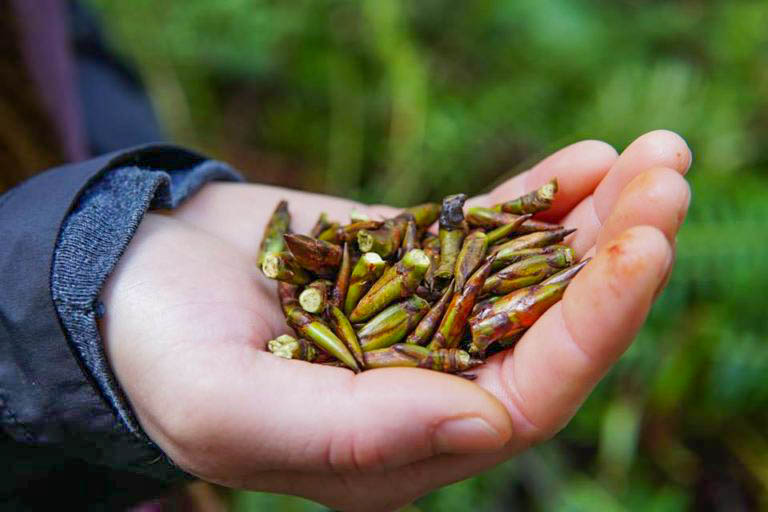
At the same time, it’s most ideal to come across branches of trees that have conveniently (and recently) fallen to the ground from late winter winds. Stumbling across these will prevent you from scaling up taller trees and risking breaking branches and causing harm to the trees, or yourself, on the way up or down. This is much safer and easier.
If you harvest from actual trees, never take more than a few handfuls from each tree as it takes a lot to produce these buds. Remember, trees are living beings. They’re generous in their gifts and deserving of our care and honoring. It’s also best to be respectful and practice sustainable harvesting by only taking what you need.
What you’re on the lookout for is fresh, tightly closed, 1 to 1 1/2 inch long buds that are coated in a golden-reddish resin. And the more resin the better! Holding out until late February or even March will ensure your buds are nice and sticky and sweet smelling. If buds have become swollen or have started opening to the spring warmth, their potency will have diminished significantly, and sadly, you’re likely too late. If you find black marks or lines on or in your buds, again, you’re too late as rot is setting in. Your buds should look alive and vibrant with life force and orange-golden color, and smell pleasantly and mistakably sweet.

Harvest your Poplar buds before they start flowering like the ones above.
When harvesting, fresh and alive is preferred over semi-dried buds because exposure to the elements and moisture can potentially cause the center of the buds to turn black with decay and start rotting or molding, which you definitely don’t want in your medicine! This is good to think about after your harvest as well. You either want to make your medicine within a few days of harvest, or freeze your buds until you’re ready to do so to avoid risk of decay as drying can take weeks and rarely turns out in your favor.
Poplar buds are very sticky with resin. It’s good to think about this before you harvest so you have the right container for harvesting. It’s best to use glass jars, plastic or metal containers. This resin is non-water soluble so you’ll need to use alcohol or oil to clean the resin from your container and fingers afterward.
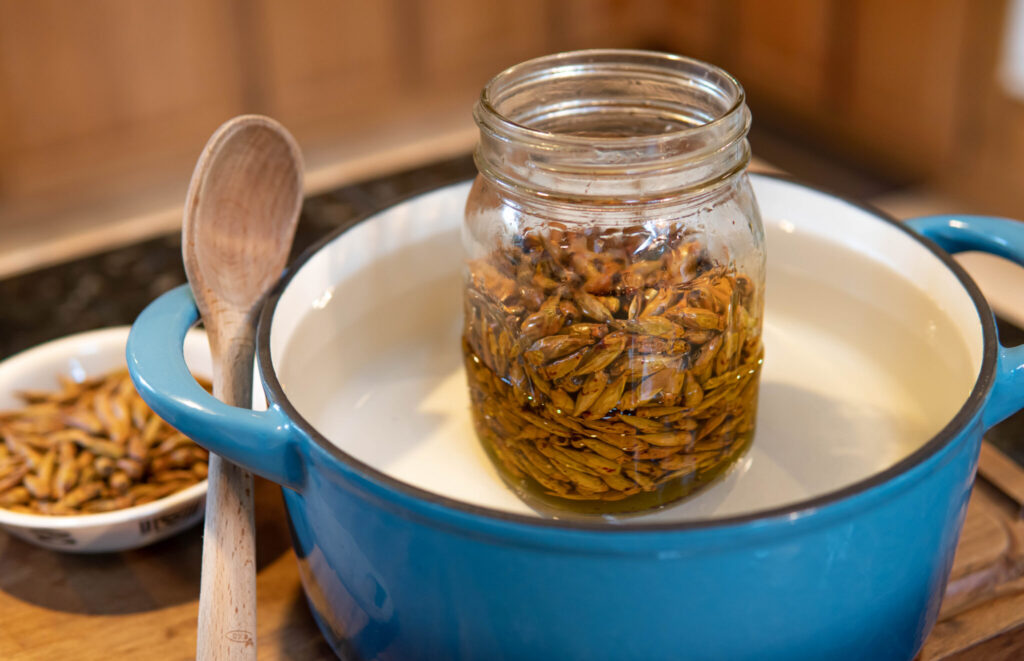
Poplar Bud Oil Infusion
Once you and your harvest is safely home, it’s time to start making your medicine. The first step in making your herbal oil infusion is choosing the right oil. I usually go with organic unrefined or extra virgin olive oil. Next, be sure you have the right tools for a hot water bath, or a Bain Marie. For a hot infusion you’ll need a glass jar for the infusion mixture itself (oil and Poplar buds), and a pan large enough for the jar with room for a few inches of water.
The purpose of this oil infusion is to draw out as much of the resin as possible from the buds into the carrier oil to later use topically or incorporate into a salve. There are two methods to achieve good results, the quick method, or the slow method. The quick method uses higher heat and takes just a few hours, the slower method uses lower heat and takes a few days. The choice is yours. If you have the time, I suggest a longer extraction process as it can be more potent.
The Quick Method: First, fill a pint or quart jar with full and intact Poplar buds, just don’t exceed 3/4 of the way full. Do not crush, blend, or cut the buds as you’ll release the water content into your oil, which can later lead to molding. Next, add your oil and stir. Your ratio should be 1 part buds, 3 parts oil. So if you have 1 cup of buds, you’ll want 3 cups of oil. The oil line should be a few inches or finger widths above your buds.
Next, for the hot water bath, place your jar of buds and oil in your pan, then fill the pan with water. I like to match the water line to be equal to or slightly higher than the materials in the jar if possible for the most efficient heating, but less water will do; especially if you’re using a shallow pan that can only hold so much.

Next, turn your burner on and maintain a very low simmer—just enough so there are a few small bubbles rising from under the jar every few seconds. It may take some tinkering with the temperature for a short while to get this right. Let the heat extraction process unfold like this for 2-6 hours, stirring ever hour.
The Slow Extraction Method: For a slower extraction you’ll repeat the steps above but instead of maintaining a low simmer for your heat, you’ll use a lower heat setting and use a thermometer and retain a temperature of around 120 +/- degrees for your oil for 2-4 days, or until nearly all resin has been extracted from the surface of the buds. Again, this slower method can result in a more potent extraction.
For both methods above, when your heat time is complete it’s time to strain your buds from the oil. Strain your oil into a glass jar using a cheese cloth or a muslin bag. Don’t use an herb press as this can release water content from the buds. You can compost the buds and let your oil cool before putting a lid on it and storing it in a cool, dark place. Like with many tree resins, Poplar is rich in anti-oxidants which gives extracts of it a very long shell life. This can even prevent other oils Poplar extracts are added to from going rancid for long periods of time, taking the place of Vitamin E as a preservative.
You can make other preparations with Poplar buds as well such as incense and fumigation, teas and tinctures, and you can use your freshly prepared oil in a salve or use it as is for topical uses.
Unlock Your Free Issue Of...
🌿 The Aromatic Medicine Garden Membership 🌿
Are you ready for a deeper, holistic dive into the world of aromatic plants? See what our membership is all about with your free sneak peek issue, including a 1 hour plant talk and a 21-page plant monograph pdf with a medicine cabinet full of DIY recipes.

Poplar Bud Salve
As opposed to a liquid herbal oil, a salve is a semi-solid medicinal ointment. Once you make an herbal oil following the instructions above, you’re just a step away from making a salve. To do so you’ll need herbal infused oil, beeswax, which you can buy in blocks or in small beads, a pan for double boiling, and small 1 to 4 ounce jars or tin containers with lids to fill with your salve. I usually offer 2 ounce salves as gifts to family and friends and keep 4 ounce jars for myself and family since we use them more frequently. 4 ounces will last quite some time.
Step 1: Prepare an herbal infused oil (follow instructions above).
Step 2: Using a dedicated salve jar for the job (it will be difficult to clean off the beeswax), add 1/4 cup of beeswax for every cup of Poplar oil you wish to use. I usually use about 2 cups of oil myself, which makes a decent amount of salve. The easiest way to measure beeswax is when it’s in bead form. If you have beeswax in block form, my favorite trick is to shave off the block with a heavy duty knife and pack my measuring cup full with the shavings for the best measurement accuracy.
Step 3: Heat up your oil and beeswax mixture in a Bain Marie or hot water bath (outlined above) until the beeswax is completely melted and dissolved into your oil. You can use wooden skewer, clean stick, or designated spoon to stir the mixture. I recommend not using utensils you like as they’ll be super hard to clean. To test your desired consistency, place a drop of your mixture on a piece of wax paper or a small dish in the freezer for a few minutes to cool. If it’s too soft, add more beeswax. If it’s too solid, add some more oil and try again.
Step 4: Once fully melted and stirred remove your mixture from the heat and immediately, and carefully, pour into your small jars or other containers. Allow to fully cool for 30 minutes to an hour before placing their lids on and storing them in a cool, dark place.
I suggest playing around with infused oils and salves. You can certainly reap many benefits from Poplar buds alone, which I suggest you learn about from experience. At some point you can create formulas by adding together other herbal oils or creating salves with additional herbs. To enjoy the incense qualities of Poplar, simply light an incense charcoal, allow it to burn down on its own for at least 5 minutes until a thick white ash is present on its surface, and sprinkle some crushed, dried, poplar buds on the coal. To dry buds for incense you’ll want to open each bud with a knife and put them in the dehydrator to speed up the dry time to avoid the risk of molding. This might be an all day process or take as little as 6 hours depending on factors like drying temperature and water content. You can also incorporate Poplar buds into many different incense formulas and styles of incense.
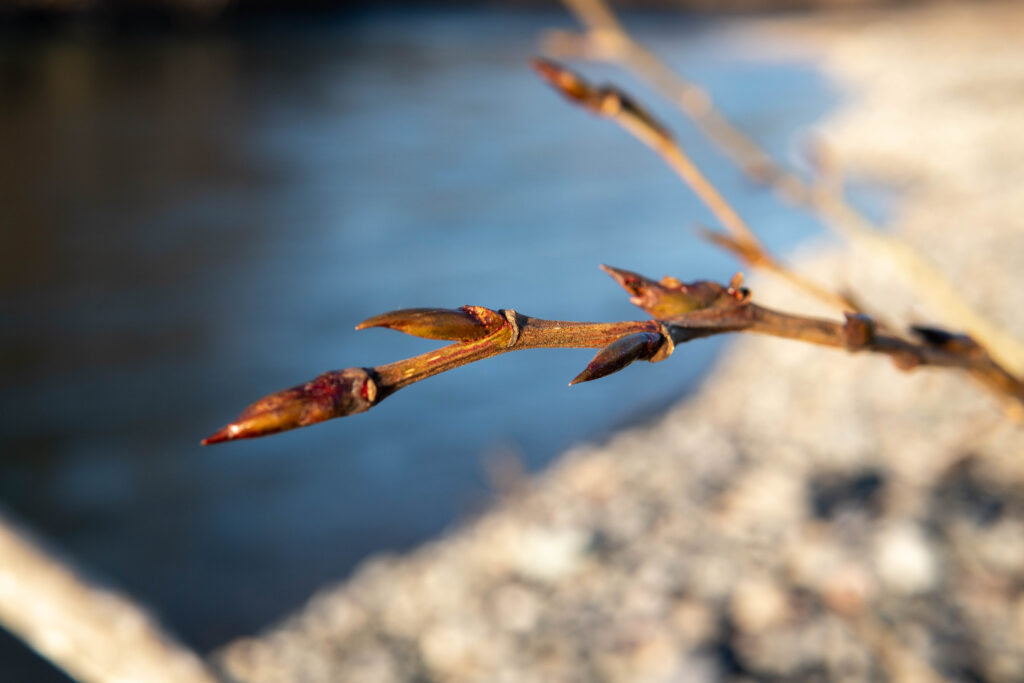
The Medicine of Poplar
There’s no wonder Poplar buds are referred to as ‘Balm of Gilead’. In the Old World, the term ‘Balm of Gilead’ referred to healing in general, whether physical or spiritual. The word “balm” itself refers to an aromatic substance used for healing. Poplar buds have a wide scope of therapeutic properties in both internal and external use. Poplar bud oil is an important medicine to have in your cabinet as it acts as a first aid ointment, skin soother, moisturizer, and pain reliever.
As a first aid, this fragrant oil is used for many skin irritations like eczema, psoriasis, athlete’s foot, and rashes. It’s great for healing chapped skin, insect bits and stings. It’s a superior oil for healing burns and sunburns, as it soothes and encourages rapid cell growth. It also helps skin heal faster when used to treat cuts, scrapes, wounds, and bruises. Its strong anti-inflammatory and anti-rheumatic properties make it a great choice for relieving aches and pains associated with arthritis, injuries, sore muscles, and physical tension. Many use Poplar bud oil as a warming and relaxing (and sweet smelling!) oil for therapeutic massage. It’s also a great addition to moisturizers and cosmetic cremes to help bring energy to the face and skin, producing a vibrant glow.
Poplar contains salicylic acid, which is a very helpful mild pain reliever. However, it’s important to note here that a small percentage of folks (1% +/-) are allergic to plants that contain this natural chemical. These same individuals are usually very sensitive to aspirin and other pain relievers like White Willow bark. Use caution if you or others you know might have this allergy.
As incense, tea or tincture, Poplar buds are very helpful at relieving respiratory complaints like congestion, while increasing circulation to the respiratory system. They’re commonly used internally in these ways to treat coughs, sore throat, bronchitis, and sooth airways that have been coughed raw. They also help reduce and remove deep phlegm with strong expectorant properties, and are used to treat lung infections. Using infused oil as a warming chest rub can also bring relief to a damp cough.
Whether used for stiff joints, coughs or cold symptoms, lung congestion, inflammation control, or skin healing, Poplar and Cottonwood are a wide spectrum medicine that’s a definite must for your medicine cabinet.
If you’re interested in learning more about aromatic plants used as incense, and would love 20 plant monographs with even more detail than you see here for Poplar buds, click here to get a copy of my ebook, Materia Aromatica. This is the only book of its kind to go into the rich histories, and the medicinal and spiritual uses of the worlds most loved incense plants.

Dive into the ancient world of aromatic plants with the Materia Aromatica ebook, an in-depth guide to the medicinal and therapeutic, spiritual, and aesthetic uses of the world's favorite incense plants. This rare resource offers detailed plant monographs and explores how incense has been used across cultures for healing, ritual, and pleasure.
Article Written By Evan Sylliaasen

© 2020 The Northwest School of Aromatic Medicine. All rights reserved.
*The statements above have not been evaluated by the FDA, and are for educational purposes only. This article is not intended to diagnose, treat, cure, or prevent any disease. This article should not be taken as medical advice. Please consult your physician before you use this information for health purposes.
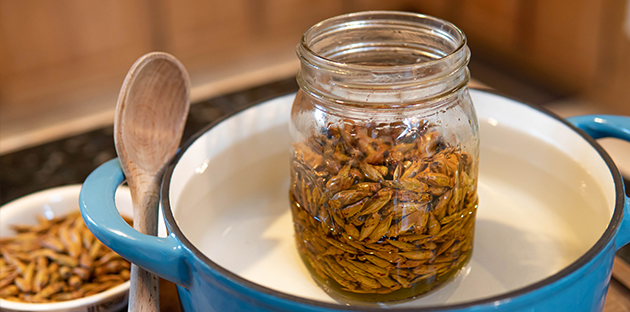
1 Response to "Making Poplar Bud Medicine: Harvesting, Infusions, & Salves"
Thanks a million for… !